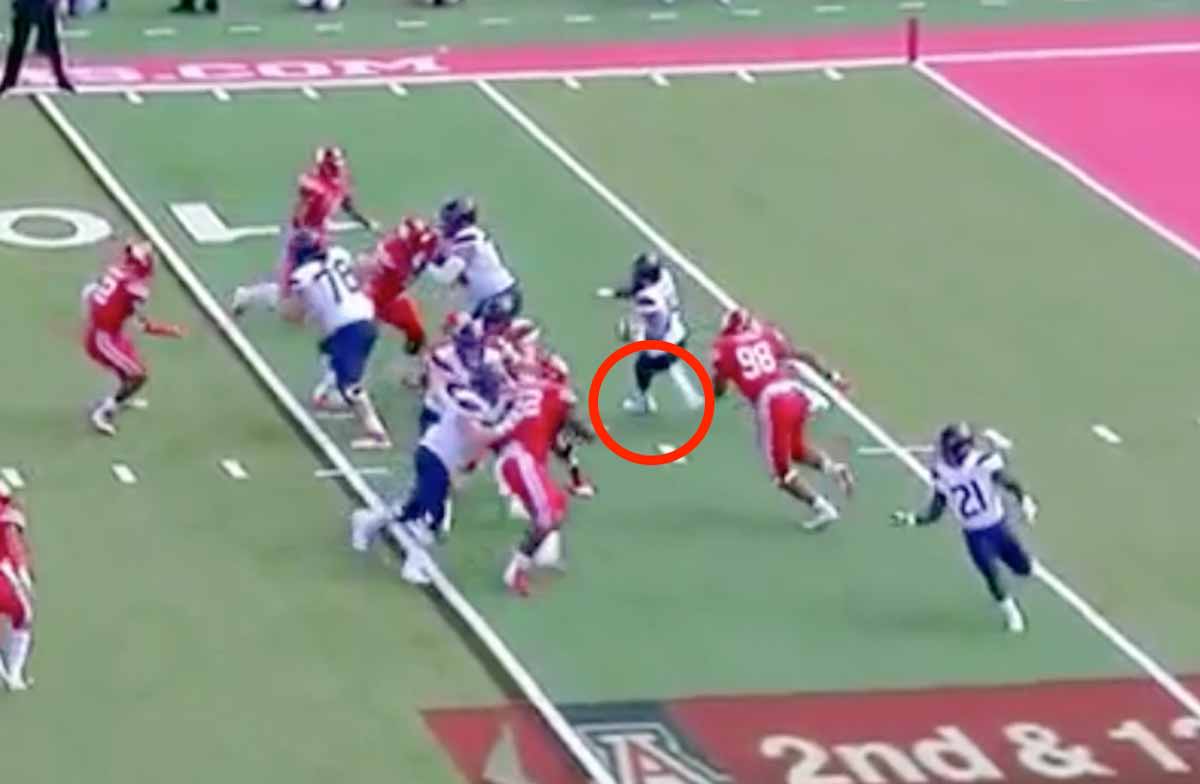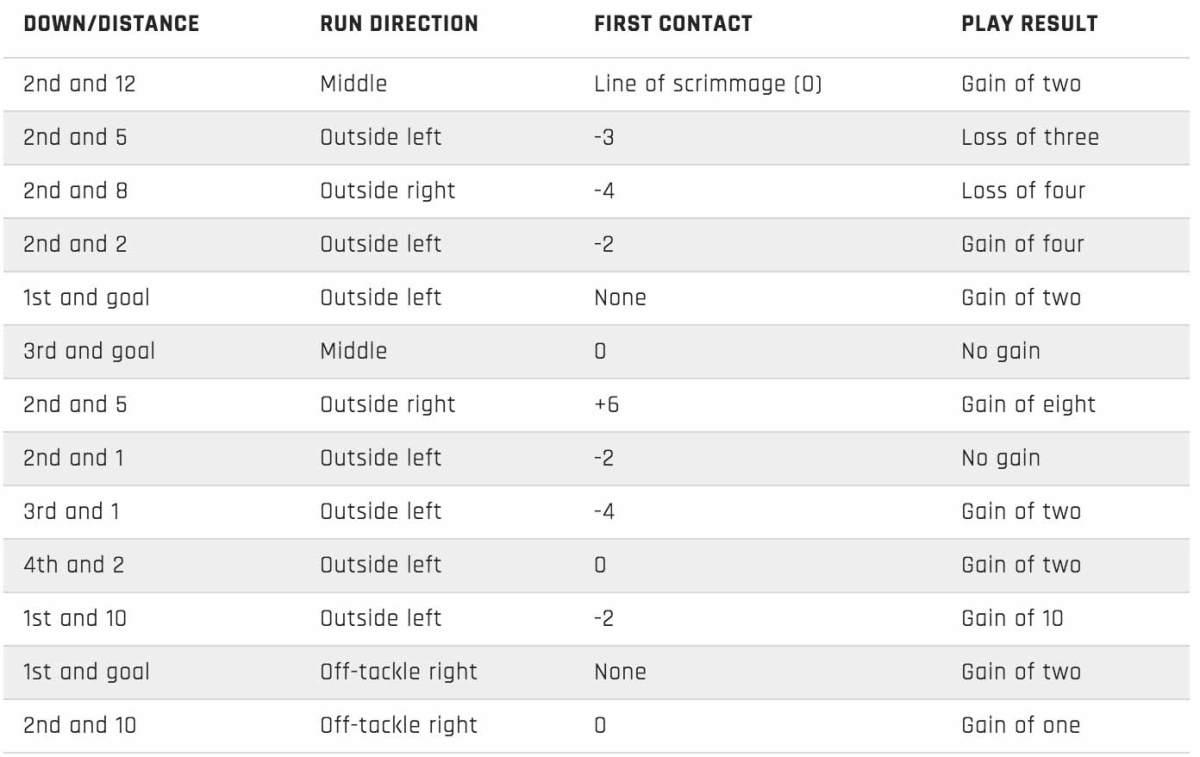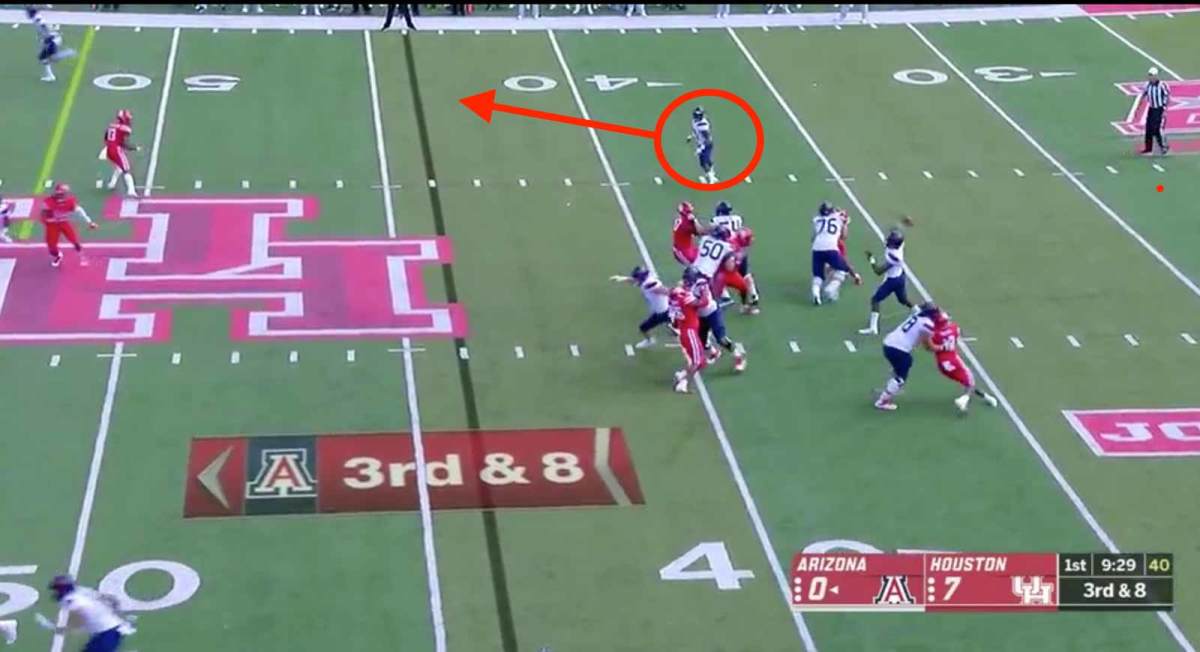What's Wrong With Khalil Tate? A Closer Look at Arizona's Offensive Regression

Welcome to the Film Room. First, learn the ground rules about this place: No eating, drinking, talking or sleeping. And no cell phones. This is a weekly analysis of one big play, series, scheme or idea from the weekend’s slew of college games and deciphering what it means going forward.
Two weeks into the college football season, a mystery has emerged in the desert—and no, we are not talking about how 64-year-old Herm Edwards has Arizona State 2–0. Last year’s most explosive dual-threat quarterback, Arizona’s Khalil Tate, has 19 yards rushing, has completed 51.9% of his passes, has tossed twice as many interceptions (two) as touchdowns (one) and is the captain of an Arizona team once considered a preseason Pac-12 South dark horse and now sitting at 0–2 after a 45–18 blowout loss to Houston. This is the same player that last fall uncorked a six-game stretch never seen before in the sport: He ran for more yards in a single game, 327 against Colorado, than any other quarterback in NCAA history, and his 840 rushing yards in October were the most by any Football Bowl Subdivision player in that month in at least a decade.
So why has he struggled so badly against BYU and Houston? Like most things in football and in life, there is no single easy answer. In attempting to solve this mystery, we analyzed every single one of Tate’s designed runs and pass attempts—a total of nearly 100 plays—and stumbled upon some answers, listed here in descending order of importance.
A scheme change and an ill-timed injury
New Arizona coach Kevin Sumlin and first-year offensive coordinator Noel Mazzone admitted last week that they had bungled the season-opening 28–23 loss to BYU. Their game plan did not utilize Tate’s biggest weapon: his legs. “Last week, I tried to turn Khalil Tate into Peyton Manning,” Mazzone told the ESPN broadcasting crew ahead of the Wildcats’ Week 2 game against Houston. Sumlin had a bolder message: “We’re going to unleash Khalil Tate.”

That plan never really materialized, and it’s probably because Tate appeared to injure his left ankle on the second play of the game, a designed run up the middle that gained two yards. You can see the injury on the still shot above. ESPN’s cameras caught the Arizona training staff rewrapping Tate’s left ankle after that opening series, and the quarterback and his coach confirmed the injury afterward. The injury wasn’t serious enough to bench Tate, but it forced coaches, Sumlin said, to “draw a line” through the rushing plays the Wildcats had prepared.
Coaches will tell you that the best offensive coordinators are those who don’t fit players into their system but adjust their system to fit players. Tate’s fit into Sumlin and Mazzone’s more traditional offense is off to a rough start. In postgame interviews in Houston, the quarterback cited “growing pains” in a new system under a new staff. “Things are going to happen when you have a new coach and basically five linemen that haven’t played college football yet,” Tate said. We’ll get to those linemen later.
This summer, Tate described Arizona’s new offense as a system not at all like former coach Rich Rodriguez’s QB run–heavy spread scheme that he excelled within during that banner October. He described Mazzone’s system as more of an NFL offense that asks him to make more “next-level reads” and includes more vertical passing from the pocket—emphasis on those last three words. He’s never played in such a system, he said in an interview in June. “High school, did read option and vertical passing, but it was never really college-style reads, like we have with Coach Noel Mazzone and Coach Sumlin,” Tate said.
The new system is somewhat absent of the designed quarterback carries—not zone reads but actual QB-only rushing plays, whether power or counter—with which Tate thrived under Rodriguez. At one point Saturday, Arizona appeared to run such a play, but Tate, hampered by that ankle, lost four yards. Zone reads have been rare too, and the ones in which Tate has kept the ball have not been very successful.
Bottled up on the ground
Through two games, Tate has carried the ball 13 times on designed rushing plays, most of them zone-read keepers, and gained 26 yards. You’ll notice that only two of those gained more than four yards and four lost yards or resulted in no gain.

The farthest-right column in the table is unsettling for any Arizona fan. Tate was hit at or behind the line on 10 of his 13 carries. That speaks to two things. First, teams are clearly ganging up on Tate, as they have been since his breakout October. He has 140 rushing yards in his last five games after running for 1,227 in that six-game stretch. Defenders are closing the middle of the field and forcing Tate to bounce most of his rushes outside (the end result of nine of his 13 runs so far this year), where he’s less dangerous. Second, as Tate mentioned, the offensive line is struggling. The Wildcats replaced three starters from last season and played Saturday without their most experienced guy, left tackle Layth Friekh.
Arizona’s offensive linemen may be struggling in the run game, but they are having even more issues in pass protection. This season Tate has been pressured on 26 of 81 dropbacks, roughly one-third of the time. One of the more baffling parts of that stat is this: Tate has chosen to tuck the ball and run on only two of those dropbacks. Some of Tate’s best plays last season came from him scrambling or on designed bootlegs. He’s hardly done either through two games, another product of being asked to stand tall in the pocket.
Throws that work, throws that don’t
His receivers have dropped six passes, including at least one that would have been a touchdown. Three of those drops would have picked up the first down on second-and-long situations; the other three were long bombs of 30, 40 and 50 yards. If just two of those six passes were caught, maybe Arizona is 1–1 instead of 0–2.
Tate is best in the passing game when he gets the ball out quickly, as in the two GIFs above. No two- or three-step drops. No tossing from a collapsing pocket. No chucking it 20-plus yards downfield. Just riding out the read and immediately firing for a short-to-intermediate completion.
Bad things happen the longer Tate stands in the pocket and the farther he throws down the field. He has only completed one of 14 attempts this season in which his pass has traveled in the air father than 20 yards from the line of scrimmage. That is not good, but remember, receivers dropped three of those. The middle of the field has been Tate’s bugaboo, as he has completed less than half of throws to that area. He’s thrown high or overthrown receivers more than anything else. Take a look.
Type of incompletion

Completions by distance

Completions by direction

So what’s the explanation? It might go back to the scheme. Rodriguez’s offense employs simple passing concepts: A quarterback might have a two-man route, or make a pre-snap decision on which side of the field he’ll throw to. In Arizona’s new offense, the route concepts are deeper—three and four-man routes—and reading coverages is more elaborate, which Tate said over the summer. There’s more thinking in general. It’s an adjustment. Below, you see Tate trying to force a pass into a small window in a situation where his safety valve (circled in red) might have gained the first down. The result of the pass: an interception.

Are these just growing pains in a new offense with inexperience at key spots, or is a deeper problem keeping Arizona’s best weapon bottled up? We’ll soon find out. The Wildcats play USC, Utah and Oregon in a five-week stretch starting Sept. 29.
